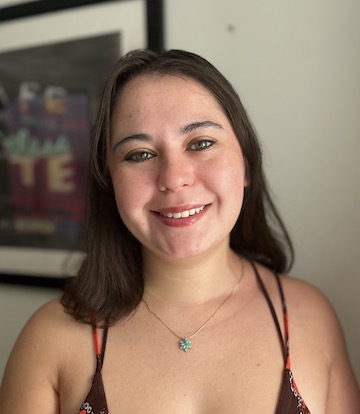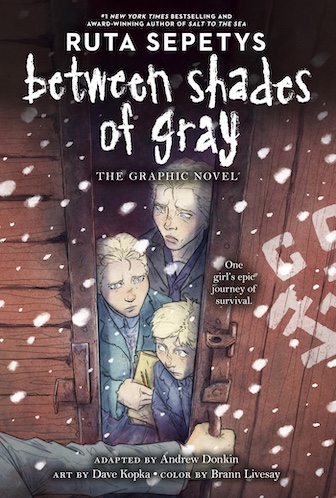Beauty and Grief
Alina Grabowski’s debut novel explores questions of loss and identity in a seaside New England town
Women and Children First, the debut novel by Vanderbilt M.F.A. graduate Alina Grabowski, opens with the unattributed quote, “The only reason that they say ‘Women and children first’ is to test the strength of the lifeboats.” Yet what follows is a kaleidoscopic narrative that proves girls and women cannot be pigeonholed into the role of victim.

At some point in their lives, all girls will get hurt, but so too will every girl hurt someone else, a reality depicted unflinchingly in Women and Children First. Nor are Grabowski’s female characters shoehorned into the other stereotypical boxes: There are girls who are sexually active and comfortable speaking about it, and there are those who feel trepidation when it comes to intimacy. There are mothers who refrain from calling their daughters beautiful so as to prioritize the importance of their character, and there are mothers who jump at the chance to introduce their daughters to the Macy’s makeup counter the moment they turn 13.
In one sense, the book tells a single story, that of the fictional seaside community Nashquitten, Massachusetts, and the death of a local high schooler named Lucy. But at the same time, Women and Children First tells a series of stories, connected like a web. The book is divided into 10 parts, each told from the perspective of a different girl or woman who lives or grew up in Nashquitten, all with some connection to Lucy.
While the narrators’ memories and experiences color in the missing pieces of Lucy’s death, their stories shoot off in countless directions, taking readers away from Nashquitten, away from the present, and away from adolescence. One segment of the novel, for example, features Natalie, an ambitious young woman who escaped to California only to wind up working as an assistant for an emotionally abusive, misogynistic boss. While visiting Nashquitten to support her mother, who is undergoing treatment for breast cancer — another opportunity for Grabowski to probe the complexities of womanhood — Natalie has a striking encounter with Lucy’s father in the waiting room of the hospital on the night of Lucy’s death. What makes the moment resonant, however, is the way it contributes to Natalie’s decision to finally leave her job, not because it provides clues about what happened to Lucy.
Lucy’s death, in truth, is never really a mystery, just a tragedy; it is clear that those who suspect foul play are just grasping for reprieve from their senseless grief. Neither is her loss a plot twist. Even before we find out about Lucy’s accident, we are told that death is a constant presence in Nashquitten, always looming like a thick fog off the sea, always biting at the ankles of the town’s restless, reckless youth.
 The novel’s first narrator, Lucy’s classmate Jane, introduces this idea when describing a dangerous intersection in the town. “Everyone calls it the Murder Merge, which parents like to mention whenever someone new dies and they write yet another op-ed,” she says. “They spend a long time contemplating What’s Wrong with Kids These Days…. The answer’s simple: The world feels big and boundless when you’re drunk in a fast car, and it feels small and choked anywhere they can see you.”
The novel’s first narrator, Lucy’s classmate Jane, introduces this idea when describing a dangerous intersection in the town. “Everyone calls it the Murder Merge, which parents like to mention whenever someone new dies and they write yet another op-ed,” she says. “They spend a long time contemplating What’s Wrong with Kids These Days…. The answer’s simple: The world feels big and boundless when you’re drunk in a fast car, and it feels small and choked anywhere they can see you.”
The thread and threat of death serves as an axis for the web of stories in Women and Children First, tying Jane to Natalie and every other narrator, all of whom have, so far, survived Nashquitten — we are not given Lucy’s perspective — and all of whom are both numb to the idea of loss and terrified that their time will come before they have done anything that merits a legacy.
But there are no curses or sinister forces causing all this death; Grabowski’s greatest strength is her unflinching realism. Narrators’ incisive internal monologues and the organic, hyper-naturalistic dialogue immerse readers in the characters’ reckonings, and their voices are indelible. Prompted by death, characters grapple with some of the biggest, most fundamental questions a human can ask — Will I be remembered? Where is my home? — in a way that feels raw, fresh, and aware of the cliché of it all.
After tragedy, there is the desire to uncover — or, in reality, craft — a story that makes sense of what happened and why. Not only do the characters in Women and Children First characters engage in this noble, futile pursuit, but the book in its entirety is an attempt at finding a logical, meaningful explanation for Lucy’s death, as if more perspectives and information will reveal what really occurred. But we learn in detail how Lucy died about halfway through the novel, and still, all other characters’ stories go on. That is the source of the grief and the beauty.

Bianca Sass, a Nashville native, is a writer, director, and scholar whose work probes the intersection of the personal and the political. She’s a recent graduate of Amherst College, where she majored in English and Law, Jurisprudence, and Social Thought, as well as wrote and directed many theatrical productions. In 2023, Bianca workshopped her play Babydoll at the Looby Theater in Nashville. Bianca is now based in Boston.


